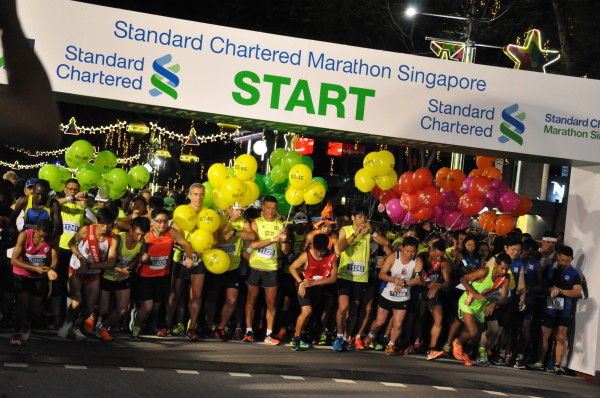During a marathon (42.195km), pacing is one of the most important elements. And yet, close to 99 per cent of runners may get their pacing strategy incorrect. They start the race too fast and in the last quarter of the race, they run out of fuel and end up walking. Even some elite runners have experienced this before.
Many runners are raring to go at the beginning
If you have done your tapering strategy well, you would be completely raring to go at the beginning of the race – and as a result, start out from the blocks much faster than you should. At the same time, the pre-race adrenaline and anticipation may also have something to do with this because it gets the muscles pumped up and the heart beating faster. So some runners go flat out during the beginning of the race.
Running out of steam in the latter stages of the marathon race
However, starting the race too fast only to find yourself running out of steam and walking all the way in the final quarter is known as a positive splits strategy and is not usually recommended if you want to achieve a good timing in a marathon.
The main reason behind this is because by running faster in the first half of the marathon, there is a good chance that you will run out of fuel and will not be able to perform well in the latter stages. This is why many marathoners end up walking after the 30km mark of a marathon – a phenomenon commonly known as “hitting the wall” and described as a point in time when the runner has depleted his or her glycogen stores and can no longer run.
Marathoners may believe in the illusion that if they run faster at the beginning, they will be able to bank some time for the latter stages of the marathon and still achieve their goal timing – but more often than not, that is not going to happen. Rather, you are more likely to complete the marathon way slower than your target time, instead.
None of the world’s top runners do positive splits
In fact, none of the world’s top marathon runners practise a positive splits strategy. Instead, there are two recommended pacing strategies to use – but this takes practice.
Even Splits Strategy
The first one of these is even splits, which is done by the pace groups at many major races such as the StanChart Marathon in Singapore. This is a strategy whereby you run at the same pace throughout the whole race.
For example if your goal is to run a marathon in four and a half hours, you will run at a 6 minute 30 seconds per kilometre pace, in order to achieve your target.
However in order to choose the even pace that you are going to go at, it needs to be something that you are confident that you can sustain throughout the entire 42km of running. So do not be too ambitious and aim for a timing and pace target that is out of your reach – because otherwise, you will end up “hitting the wall” too.
Negative Splits Strategy
The second strategy is called negative splits. As the name suggests, it is where you run the second half of the race faster than the first – and is commonly practised by elites and podium finishers at races. However this strategy may take lots of practice to master because it requires the runner to be very familiar with his or her pace in order to run negative splits. Runners would have to execute just enough energy in the first half, so that they are not overdoing it and will have the energy to speed up in the second half.
Recently at the California International Marathon, top Singaporean runner Soh Rui Yong practised this strategy – by running very conservatively in the first 32km of the marathon, before going all out in the final 10km – and finishing the race very strongly. As a result, he completed his marathon in 2 hours 26 minutes and 01 second – becoming Singapore’s second fastest ever marathon runner, in the process.


Leave a Comment